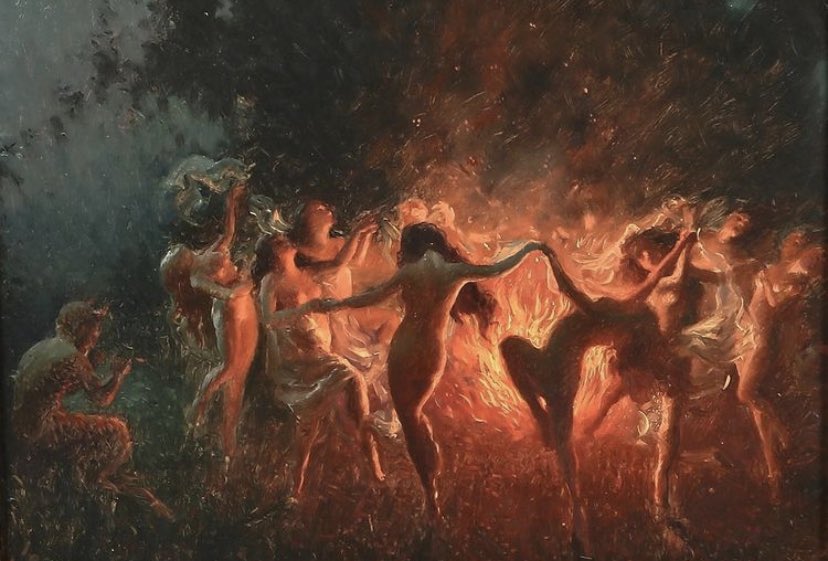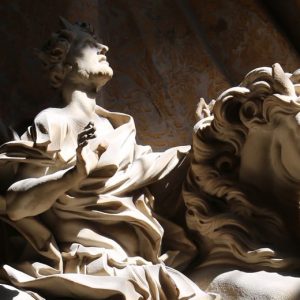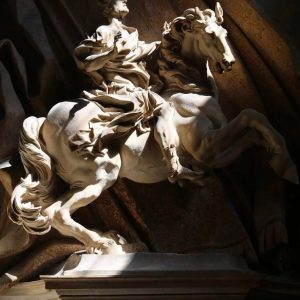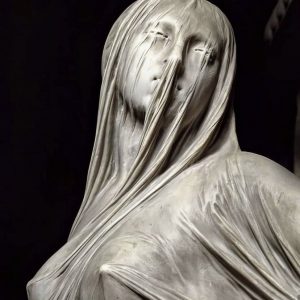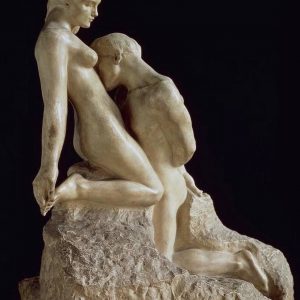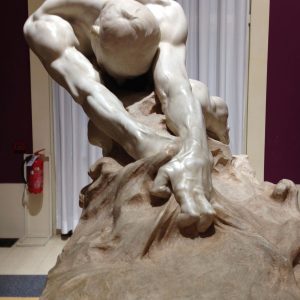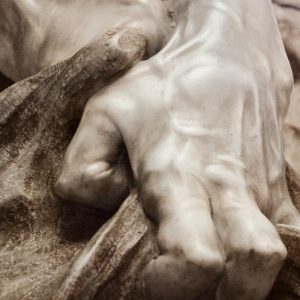Joseph Tomanek’s “Nymphs Dancing to Pan’s Flute Around the Fire” is a painting that captures the essence of mythology and the Art Nouveau movement. This vivid and sensual work of art transports the viewer into the world of ancient Greece, where nymphs dance with wild abandon to the enchanting music of Pan’s flute.
The Artist: Joseph Tomanek
Joseph Tomanek (1889-1974) was a Czech-American artist who practiced in Chicago. Born in Strážnice, Austria-Hungary (now the Czech Republic), Tomanek trained at the prestigious Art Institute of Chicago and the Academy of Fine Arts in Prague. He studied under notable artists such as A.H. Krehbiel, A. Sterba, and K.A. Buehr, honing his skills and developing his unique style.
Tomanek arrived in Chicago in 1910 and quickly became associated with the Bohemian Arts Club of Chicago. He modeled himself after the renowned French academic painter William-Adolphe Bouguereau, whose influence can be seen in Tomanek’s attention to detail and mastery of the human form. Throughout his career, Tomanek created numerous paintings that showcased his talent and passion for art.
The Painting: “Nymphs Dancing to Pan’s Flute”
“Nymphs Dancing to Pan’s Flute” is a stunning work that instantly captures the imagination. The painting depicts a group of nymphs, mythological female figures associated with nature, dancing around a fire to the music of Pan’s flute. The nymphs are portrayed as naked, their bodies contorted in various positions as they move to the rhythm of the enchanting melody.
Tomanek’s style in this painting is reminiscent of the Art Nouveau movement, which was popular in the late 19th and early 20th centuries. The nymphs’ bodies are rendered in a flowing, organic manner, with sinuous lines and curves that echo the shapes found in nature. The background of the painting is filled with lush, verdant foliage, adding to the sense of wild abandon and sensual freedom that the nymphs embody.
The use of color in “Nymphs Dancing to Pan’s Flute” is particularly striking. The warm glow of the fire illuminates the nymphs’ skin, creating a sense of warmth and intimacy. The greens and blues of the surrounding foliage provide a cool contrast, emphasizing the otherworldly nature of the scene. Tomanek’s skillful blending of colors and shades creates a sense of depth and dimensionality, drawing the viewer into the mythological world he has created.
The Mythology Behind the Painting
To fully appreciate “Nymphs Dancing to Pan’s Flute,” it is helpful to understand the mythological context in which it is rooted. In Greek mythology, nymphs were divine spirits associated with various aspects of nature, such as trees, rivers, and mountains. They were often depicted as beautiful, youthful women who enjoyed singing, dancing, and playing music.
Pan, on the other hand, was a god of nature, wilderness, and rustic music. He was often portrayed as a half-man, half-goat figure, playing his signature instrument, the pan flute. In mythology, Pan was known for his ability to inspire fear and panic, as well as his association with sexuality and fertility.
Tomanek’s painting brings these mythological elements together, creating a scene that is both visually stunning and rich in symbolic meaning. The nymphs’ wild, uninhibited dancing represents the freedom and sensuality associated with nature, while Pan’s music serves as a reminder of the raw, primal energy that underlies the natural world.
The Legacy of “Nymphs Dancing to Pan’s Flute”
“Nymphs Dancing to Pan’s Flute” is a testament to Joseph Tomanek’s skill as an artist and his ability to bring mythological themes to life on canvas. The painting captures the spirit of the Art Nouveau movement, with its emphasis on organic forms and natural beauty, while also paying homage to the classical traditions of European art.
Today, “Nymphs Dancing to Pan’s Flute” serves as a reminder of the enduring power of art to transport us to other worlds and to evoke the timeless themes of mythology and human experience. It is a painting that invites the viewer to let their imagination run wild, to embrace the sensuous beauty of the natural world, and to celebrate the enduring legacy of art throughout history.
This remarkable painting by Joseph Tomanek is sure to leave a lasting impression on anyone who appreciates beauty, mythology, and the skill of a talented artist. “Nymphs Dancing to Pan’s Flute” is a true masterpiece that captures the essence of an era and the timeless allure of the mythological world.
See more about the artist, Joseph Tomanek, here.
See more information about Nude Nymphs Dancing to Pan’s Flute here.

